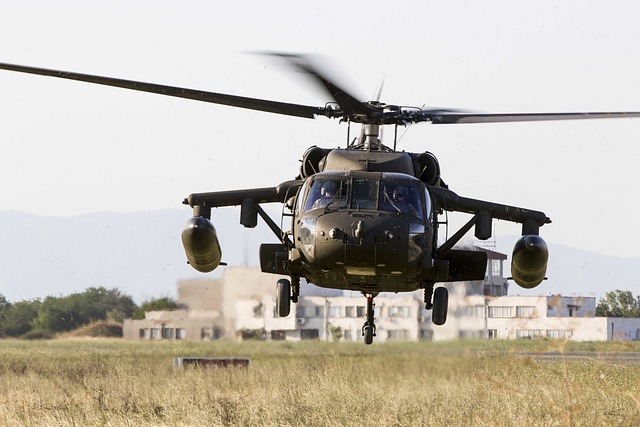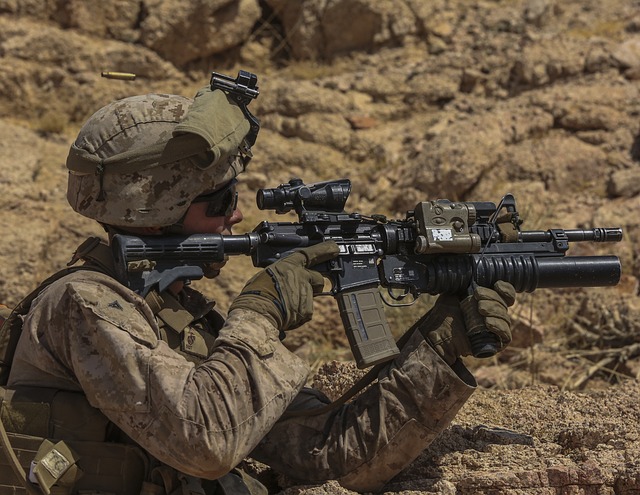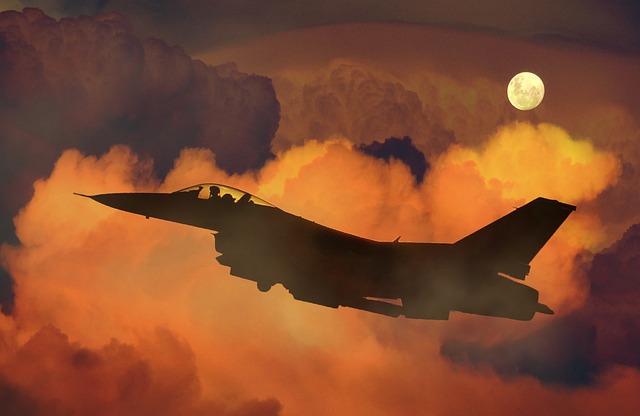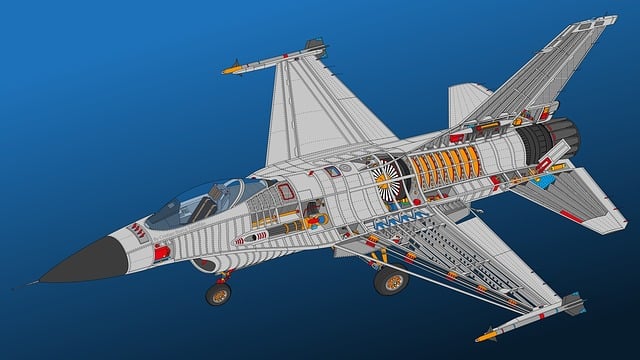
The 82nd Airborne Division Flag is a significant and symbolic emblem that reflects the division's storied history and core values of courage, loyalty, and commitment. First flown during World War II's D-Day invasion, the flag has been a constant in the division's global deployments, from Vietnam to recent conflicts in Iraq and Afghanistan. It exemplifies the division's readiness for rapid response operations and serves as a tangible link to their heritage. The flag's design features an eagle, a paratrooper, and the motto "In Light of Day There Is No Fear," all of which underscore American air power and the 82nd Airborne's swift deployment capabilities. It represents the bravery, dedication, and honor that each member of the division embodies and fosters a sense of pride and camaraderie among its soldiers. The flag stands as a lasting legacy of the division's contributions to U.S. Army operational readiness and global security, symbolizing unity and the indomitable spirit of the 82nd Airborne.
The 82nd Airborne Division Flag, a potent symbol of American valor and unity, has traversed the globe alongside its bearers, the elite troops of the 82nd Airborne Division. This article delves into the rich history and enduring significance of this flag as it unfurls across diverse terrains during military deployments. From its roots in historical battles to its contemporary role, the flag carries tradition and serves as a beacon of unit identity and cohesion. Its presence on the battlefield is not merely ceremonial; it embodies the collective spirit, heritage, and commitment of these airborne soldiers, serving as a practical tool that enhances morale and operational readiness in modern military engagements. Join us as we explore the profound impact and multifaceted role of the 82nd Airborne Division Flag during Army maneuvers.
- The Symbolic Significance of the 82nd Airborne Division Flag in Deployments
- Carrying Tradition: The Role of the 82nd Airborne Division Flag During Army Maneuvers
- Historical Perspective: The Evolution of the 82nd Airborne Division's Iconic Flag
The Symbolic Significance of the 82nd Airborne Division Flag in Deployments

The 82nd Airborne Division Flag carries profound symbolic significance for soldiers as they deploy, embodying the bravery and resilience expected within the ranks of this elite unit. This flag is a tangible representation of the division’s storied history, its motto “In Light of Day There Is No Fear,” and the shared values it stands for: courage, loyalty, and commitment. It serves as a rallying point and a constant reminder of the proud legacy that each member continues when called upon to serve in new theaters of operation. As Army units carry this flag into deployments, they do so with the weight of its history and the hope that its presence will inspire unity and fortitude among soldiers facing the uncertainties of military operations.
The 82nd Airborne Division Flag has been a part of significant historical moments, from its inception during World War II to its involvement in various conflicts since. Its presence on deployment is not merely for ceremonial purposes; it symbolizes the readiness and adaptability that define the Airborne mission. The flag’s vibrant colors and emblematic eagle, paratrooper, and motto are emblazoned upon a banner that has seen action across continents. It stands as a beacon of American air power and the swift response capabilities that the division exemplifies. For soldiers carrying it into deployment, the flag represents a connection to their comrades, both past and present, and serves as a source of pride and inspiration in the face of adversity.

The 82nd Airborne Division Flag holds a significant place in the ethos and history of the United States Army, particularly within the rapid deployment forces. This revered symbol has accompanied the valiant soldiers of the division through numerous critical missions since its adoption after World War II. It is not merely a banner but a representation of the division’s storied past, embodying the courage, commitment, and honor that each member embodies. The flag has been present in significant operations, from the jungles of Vietnam to the sands of Iraq and Afghanistan, serving as a reminder of the division’s mission to respond rapidly to any global crisis or conflict. It is a unifying emblem that soldiers carry with them, symbolizing their commitment to the principles for which they stand and the brotherhood that binds them during deployments, often in the most challenging environments. The presence of the 82nd Airborne Division Flag on the battlefield is a testament to the division’s legacy and its role as a rapid response force within the U.S. Army’s operational capabilities.
Carrying Tradition: The Role of the 82nd Airborne Division Flag During Army Maneuvers

The 82nd Airborne Division Flag holds a significant place in the rich tapestry of American military history, symbolizing the courage and commitment of its namesake division. During Army maneuvers, this emblematic flag is carried by the unit’s soldiers, serving as both a beacon and a badge of honor on the battlefield. The tradition of carrying the 82nd Airborne Division Flag dates back to World War II when paratroopers from the division took it with them during pivotal operations such as Operation Overlord, where it played a silent yet crucial role in bolstering morale and cohesion among the troops. Today, the flag continues to be an integral part of the division’s deployments, reflecting the shared heritage and unwavering spirit of its members. As Army units engage in various operations, the presence of the 82nd Airborne Division Flag is a testament to their readiness and the enduring legacy they represent. It serves as a tangible link to the past achievements of the division, reminding soldiers of the high standards and valorous actions expected of them as they carry out their mission. The flag’s visibility during maneuvers also signifies to both allies and adversaries the division’s formidable reputation and the gravity of the United States’ commitment to its strategic objectives.
Historical Perspective: The Evolution of the 82nd Airborne Division's Iconic Flag

The 82nd Airborne Division’s flag, a symbol deeply intertwined with American military history, has evolved over the years to reflect the division’s storied past and ongoing missions. Originating in World War II, the flag was initially designed to represent the division’s rapid deployment capabilities, with its first iteration seen during the D-Day invasion at Normandy. Known as the “All-American” division due to its diverse troop composition, the flag became a beacon of unity and resilience for the paratroopers who carried it into battle.
As the 82nd Airborne Division’s history unfolded, so too did the evolution of its iconic flag. The design has been refined to include the divisional crest and the motto “In Death We Pledge,” which underscores the division’s commitment to sacrifice and service. Each iteration of the flag has carried the legacy of the division’s past while adapting to new challenges and conflicts. Today, the 82nd Airborne Division Flag remains a tangible connection to the division’s rich history, symbolizing courage, honor, and the indomitable spirit of the paratroopers who have served with distinction across multiple deployments, from the Cold War to ongoing operations in Afghanistan and Iraq. The flag continues to inspire and serve as a rallying point for soldiers as they face new challenges in the ever-evolving theater of war.
The 82nd Airborne Division Flag stands as a beacon of history and heritage, symbolizing the unwavering spirit and tradition carried forward by Army units during deployments. Its presence on the battlefield is not merely a mark of identity but a testament to the courage and commitment that defines the division’s legacy. As detailed in this article, from its evolution to its role in modern-day maneuvers, the flag serves as a tangible link to the past, guiding soldiers through the trials of deployment with a sense of purpose and pride. The 82nd Airborne Division Flag continues to be an integral part of the division’s identity, embodying the collective values and resilience that define its members. As these units move forward into new challenges, the flag remains a constant symbol of their shared history and enduring mission.







